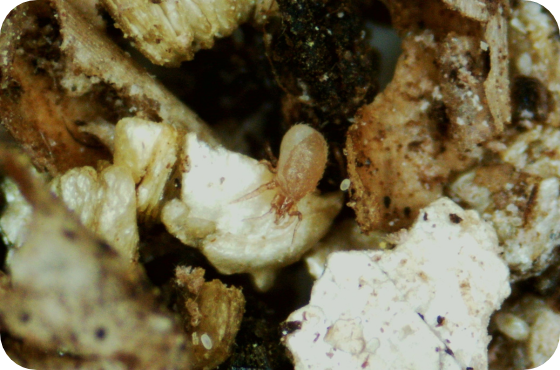Quality Products
Fast Delivery
Premium Service
Written by Kevin van Kester | Last update: 19. January 2023
Hypoaspis mites (Stratiolaelaps scimitus) is a predatory soil mite that effectively targets a wide range of soil insects. It is being used for, among others, fungus gnat larvae control, shore fly control, and thrips control. Because of its diverse diet, the Hypoaspis mite thrives across many different crops.

Meet Hypoaspis (scientifically known as Stratiolaelaps scimitus). This predatory soil mite stands out with its brown hue and robust, eight-legged body. Found primarily in the topsoil layer, it hunts for pests, but also eats plant debris and algae when prey is scarce. This allows Hypoaspis to survive up to seven weeks without a direct food source.
Hypoaspis targets several soil insects, including:
• Thrips pupae
• Fungus gnat larvae
• Shore fly larvae
The Hypoaspis is mainly effective against the larval stages of these soil insects. The soil mite is also very effective for thrips control, consuming up to five prey per day.
Hypoaspis thrives in moist, humus-rich soil. Ensuring a steady supply of food in this environment helps maintain a healthy and stable population.
For best results, use the predatory mites as soon as possible upon receipt to ensure quality. To keep Hypoaspis in optimal condition, store it in a cool environment before use. Ideally, maintain a temperature of 15-18°C with 70-80% humidity. Prior to application, allow the product to gradually adjust to greenhouse conditions to avoid temperature shock. In addition, it is important to keep the product out of direct sunlight.
To use Hypoaspis, first, gently shake the bags to mix the predatory mites evenly. Then, use a measuring cup to sprinkle the mites in small heaps onto the soil or around the pots. For precise dosing, consult your product specialist.
Important: Since Hypoaspis is a predatory soil mite, avoid applying it directly onto plant surfaces. Ensure the application is focused on the soil.